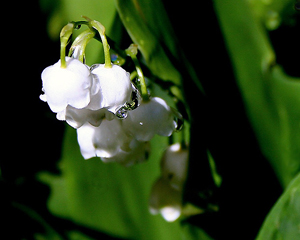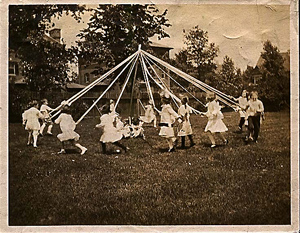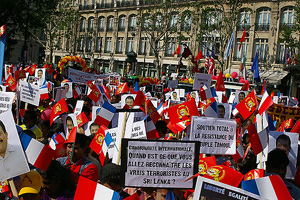
Photo by Juergen Kurlvink
May Day and LaborDay began as separate holidays, but have been combined into one in most countries, including France.
Celebrations of the holiday can now be quite peculiar.
In the streets of Paris on May 1, it is not uncommon to see peaceful lilies of the valley on one corner, and a social or political protest on the next.

Photo by Tara Bethune-Leamen
What is it?
Is it called Labor Day or May Day? Well, both, actually. Today, they are the same thing. However, historically, they began as very different holidays.
May Day began as a holiday that marked the end of winter weather and the welcoming of summer. It has traditionally been an occasion for fun and often rowdy celebrations.
The holiday is probably best known for its tradition of dancing around the maypole.
Other traditional customs include the giving of “May baskets,” small baskets of flowers or sweets. The first day of May meant feasts, dancing, and lighthearted joyfulness.
Over the past century, however, the holiday has come to acquire new meaning. Working people have picked up it up as a day to celebrate their day off from work. My guess is because it was much more fun than working – could you pick a better day to stay home from work? Since then, May 1 has also been known as Labor Day.
Why it’s Important
Labor Day is an important celebration as it is a day marking a much needed change. The holiday commemorates the fight for the eight hour work day, and celebrates the social and economic achievements of the labor movement.
How it’s Celebrated
 For the French, Labor Day has become the occasion for important social or political demonstrations.
For the French, Labor Day has become the occasion for important social or political demonstrations.
Especially in Paris, there are protests and rallies everywhere on May 1.
Still, some of the traditional meaning of the original holiday shines through. At the beginning of the 20th century, it became a French custom on the first of May to give a sprig of lily of the valley as a symbol of springtime. Today, the French government allows people to sell the flowers without a vendor’s license, and free of taxation.
So, if you’re in France on May 1, be sure to buy a lily of the valley – and get your picket sign ready.